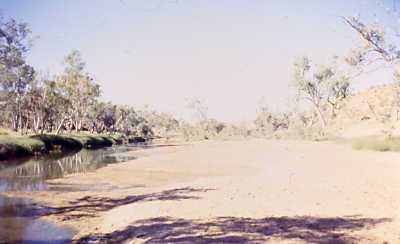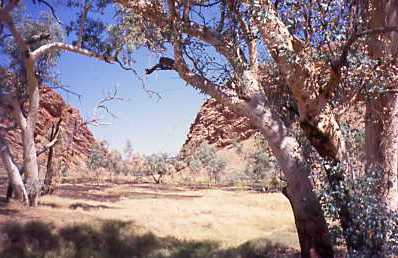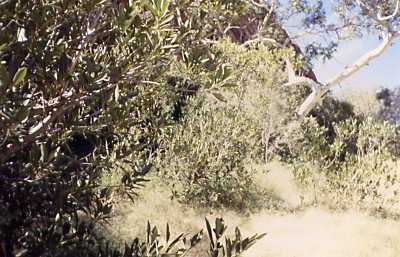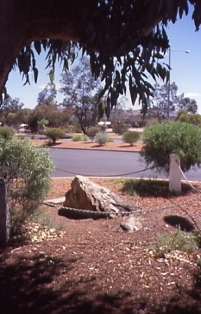Chapter 4 of Animism: Respecting the Living World engages with various aspects of Aboriginal relationships with land or place(s).
I have been privileged to spend a little time with culture teachers in and around Mparntwe, Alice Springs. I especially want to honour Bob Randall (who was working with the Institute of Aboriginal Development when I met him in 1996)*

Bob took me to visit some of the places of significance in the area - the above photo is from Anthwerrke (Emily Gap).
 |
 |
||
| is this a panoramic view of a town and its environs or a vision of persons meeting? If it is the latter, there are dogs, caterpillars, humans, and other persons here - not necessarily in the forms these names suggest in European languages. Click here to see another way of representing this same landscape community country and its Lore/Law. | the winter pools mistaken for springs that gave Alice Springs its English name | ||
 |
 |
||
| Heavytree Gap - men's sacred place but now a major road (carefully hidden in this photo but not in this caption) | Emily Gap - initiation site | ||
 |
 |
||
| Emily Gap: caterpillar moving | Emily Gap: rock art | ||
 |
 |
||
| Beneath all the haze of invasive non-indigenous grasses, a small rock is among the most sacred place-persons of the area near Emily Gap | Similarly, even if other nearby Dreaming sites look more impressive, this wild dog, Akngwelge Thirrewe, is among the most important places in what is now Alice Springs. Click here for the rock/dog's information sign. | ||
| Yarrentye - the dog's entrails discussed on p.78 of Animism: Respecting the Living World. (Click here for a bit more) | caterpillar / rock ridge badly damaged to make way for a road servicing tourist facilities (for more info, click here) | ||
 |
 |
||
| Marker for a Dreaming tree lost to a road | A Dreaming tree and would-be ritual site now surrounded by the shops and business of downtown Alice | ||
* On p.77 of the book I say that Bob Randall is a Walpiri man. I thought that's what he told me. But in his book illustrated by Kunyi June-Anne McInerney, Tracker Tjugingji (Jukurrpa Books, 2003) he is named a a Pitjantjatjara man.
last updated 23 July 2006

click here to
return to the main "more ethnography"page of my animism site
click here to return to Animism
homepage